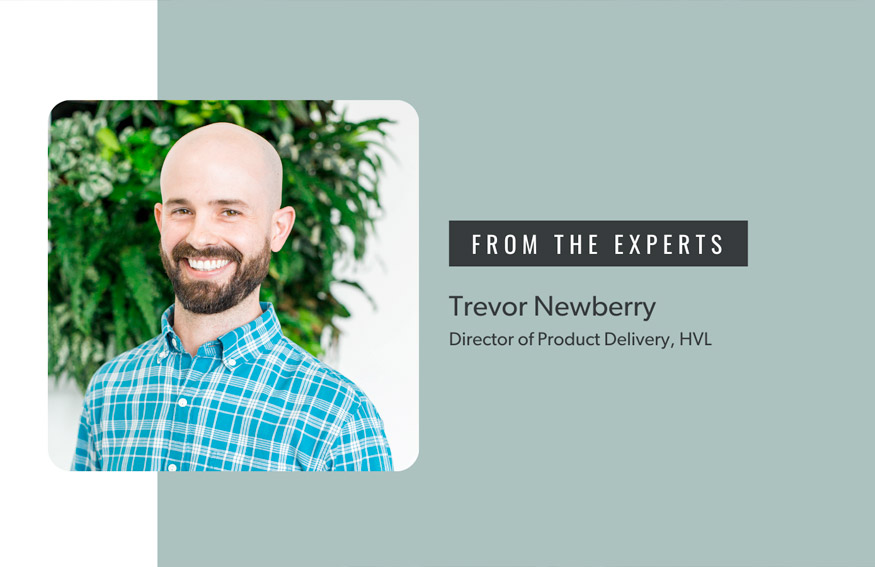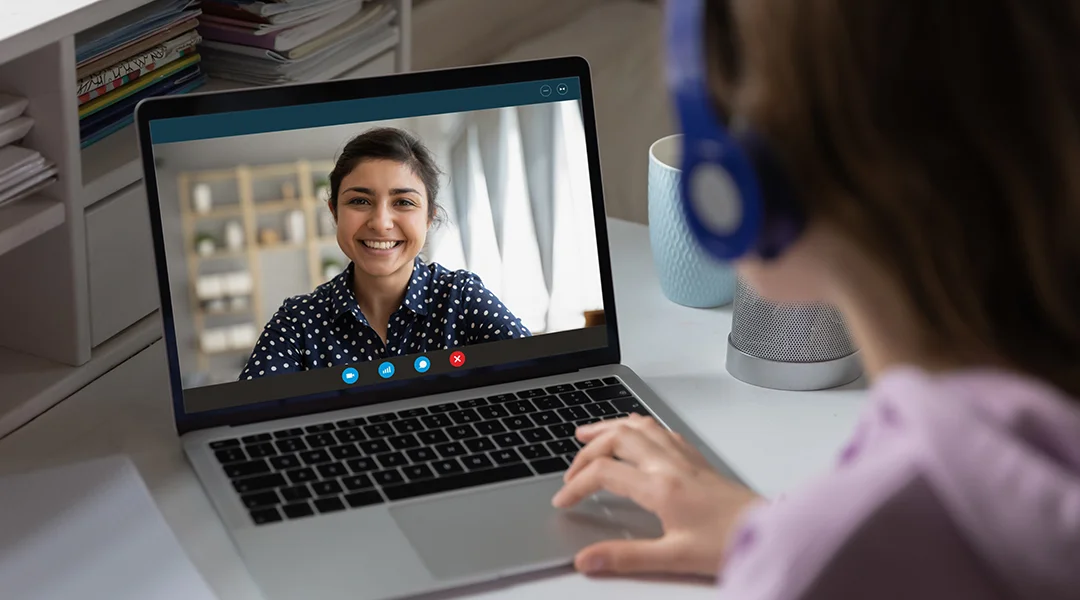When you hear zero-to-one in the context of product development, it’s critical to understand exactly what we’re talking about. We can think about it as:
Zero-to-one represents the phase of a product’s existence between the idea and the first shippable version, known as the minimum viable product or MVP.
However, even this description begs for more clarity.
Despite being a commonly-used and widely-accepted product stage, an MVP is defined differently depending on the product, the team building the product, and the resources available to those teams. At HVL, an MVP is the smallest unit of value you can deliver to a customer in exchange for another unit of value, preferably cash.
An idea, on the other hand, has a much broader definition. Ideas can range from the earliest inklings of your future product to a well-defined Product Requirements Document, complete with market research and discovery data.
Before the MVP, all you have is an idea. And, as the saying goes, ideas are cheap.
During the course of developing the MVP of your product idea, you’ll inevitably encounter concepts such as:
- Prototypes: Fake, throw-away versions of your product that allow you to test your idea with real users.
- Discovery: The process of engaging with prospective users in order to better understand their needs, pain points, and desires.
All of this takes place between the time you have your idea (Zero) and the moment you deliver your MVP (One).
Let’s Talk About Risk
The fact that there are more unknowns than knowns surrounding your idea is the central challenge of zero-to-one product development. These “unknowns” are real risks—some of which are existential in nature, for your concept and eventually your product.
In this section, we’re going to tackle a few of the key risks you’ll need to identify and mitigate when going from zero-to-one.
Market Risk: Nobody Wants This Product
The sad truth is that many products fail because no one wants or cares about the product or opportunity it’s trying to address in the market. An even sadder truth is that this risk is one of the least expensive and straightforward to mitigate. It does take some time and effort, but addressing market risk is something any founder can do with a little research and practice.
What makes customers want and buy products in the first place? Successful products satisfy one or more of the following three things:
- A pain point
- An unmet need
- An unsatisfied desire
Collectively, we call these three things opportunities. If your idea doesn’t target and address one of these three things, you’re headed nowhere fast.
But how do you know if your idea actually does address an opportunity? The process for answering this question is something we call Discovery. Discovery is a simple, yet difficult to master, set of practices designed to engage your prospective users in a dialog. This usually takes place in the form of interviews, which help to uncover opportunities.
I could cover pages and pages talking about discovery, but there are a few key things to remember when it comes to conducting discovery interviews.
- Direct, fact-based questions aren’t very useful. Instead, prompt your participants to use stories to illustrate moments in time when they have experienced something relevant to your discovery.
- Know what you want to learn before your interview and design three to five prompts (see number one above) designed to get your participants to tell you a story in answer form.
- Avoid talking about your product or idea. You’re there to learn more about the daily lives, experiences, and motivations of your prospective users. This is where you’ll uncover opportunities.
Finally, you should regularly engage your potential customers (at least one per week) and collect your findings in a central spot like a document, spreadsheet, or even a mind map.
Teresa Torres does an excellent job providing actionable insights for customer discovery. If you haven’t already, I’d definitely recommend checking out her book, Continuous Discovery Habits.
Usability Risk: No One Can Use This Product
Usability risk is the possibility that after you’ve built and shipped your MVP, users will find it difficult, if not impossible, to use.
Our primary objective with any product is to deliver value to our end-user. To do so, the user must be able to navigate the product in a way that allows them to easily and enjoyably arrive at the value. If we build our MVP to address a great opportunity that emerged from a well-conducted discovery effort, only to deliver a confusing, frustrating user experience, we might as well not have built the product at all!
In a perfect world, all founders have access to competent designers to help them design their products. But the reality is that many founders are bootstrapping and can’t afford to employ or contract with a product designer at this stage. So how do we help identify and mitigate usability risks?
We use prototypes! Don’t say I didn’t warn you about this word in the zero-to-one process. Prototypes, as a reminder, are fictitious, throw-away versions of your product designed to test usability, among other things, with real users.
You may be wondering why we don’t just wait until we have a finished product to test for usability. There are a couple of reasons:
- Prototypes are not only inexpensive to create, but they also enable us to continue to evolve (or iterate) our product in response to user feedback.
- They also come in all shapes and sizes and you don’t have to know how to code or even use design-specific tools (like Figma or AdobeXD) to create one. The most basic, yet still effective, prototype is a flipbook prototype where you draw each screen of your product in a notebook and demonstrate screen transitions by simply turning the page.
Now, when you’re using prototypes to test with prospective users, it’s important to remember a few things:
- You’re not testing for whether or not they like your product.
- You are testing to see if they can navigate your product. Can they find and understand the value?
- You should have a list of specific actions you’d like them to take using your prototype during the test.
- You should encourage your participant to “think out loud” so that you can capture their candid thoughts and feelings while navigating the prototype.
- You should have a partner with you whose sole job is taking notes. Bonus points for recording a video of the demo.
When you’ve completed several prototype demos, review your findings and decide what needs to be changed about your product’s prototype. Then, create the next iteration of your prototype and repeat the process.
By continuing to evolve your prototype in this way, you’ll quickly find your way to a design that most users can understand and engage with easily, thus mitigating much of the usability risk your product might face.
Resource Risk: Finding Traction Before You Run Out of Cash
Perhaps the most dangerous risk facing any zero-to-one startup is resource risk. With any startup, the likelihood that you will nail product-market-fit straight out of the gate is pretty slim. Most new products require a period of time where they are continually iterating based on user feedback in an effort to refine their product and find traction in the market.
Doing this can take some time, especially if you’re bootstrapping. And keep in mind, all the while you’re incurring development costs, marketing costs, and more. It can start to feel like a money black hole!
It should come as no surprise, then, that the main goal of many zero-to-one startups is to find that traction before they run out of cash. Smart founders can employ the tactics and tools we’ve already discussed (Discovery and Prototyping) to get closer to product-market fit, cheaply, before they even write a line of code.
But even then, resource risk still exists. Each product will still require a period of time when they’re in the wilderness, so to speak, searching for the right path. Those who are starting a business for the first time will quickly understand how valuable their time is. As a result, time is yet another limited resource available to founders. Despite this, it’s the only way a startup can save money. Although it isn’t long-term viable, it is a terrific opportunity to get creative and build a community around your product while it’s still in the early phases.
For example, paid ad strategies generally aren’t a great fit for startups trying to generate traction. It’s expensive and you’re driving people to an unknown product with no credibility. Instead, startups should focus on marketing efforts that don’t require as much cash as they do time.
One great example is searching for places online like forums and Facebook groups where your target users spend their time. Join these groups and start a conversation. Not a sales pitch, but a real conversation. If the opportunity presents itself, tell the group about your product and offer something like a generous free trial.
Another great way to generate traction is to create lead generators such as “how-to” guides. ive them away in exchange for an email address on your website, social profiles, and more. Build your email list of qualified leads and begin nurturing them with valuable content delivered via email.
Finally, create high-quality content to engage your users. This can be a blog, podcast, video series, or anything else you can consistently produce at a high level of quality. Distribute this content widely and keep it on hand to distribute when you’re interacting with online groups.
When you’re just getting started, there’s really no way around spending money. You’ll need to keep your product stable, squash bugs, and have the tools and services you’ll need to market and deliver your product.
However, following the consumer discovery principles and prototyping early in the creation of your product will help ease some of the pressure. Then you can get creative with your marketing by focusing on building a community and authority, as well as engaging in free, high-value activities that target your users where they “live” online.
Putting It All Together
We’ve covered a lot of territory in only a few thousand words, but this isn’t a how-to guide for zero-to-one product development. Instead, consider it a primer. My goal here is to sketch out in broad strokes the obstacles you’ll face as you get started with your product and perhaps point you in the right direction.
All product work—software or otherwise—is fraught with risk and zero-to-one products are uniquely fragile and susceptible to these risks.
As you’re getting started on your product journey remember these key things:
- Know what risks, broadly speaking, exist, actively seek them out, and make a plan to mitigate them. Remember the big three are:
- Market risk
- Usability risk
- Resource risk
- Think like a scientist and do your best to avoid cognitive biases that can trick you into following the wrong path.
- Talk with your prospective customers often to gain a deeper understanding of the opportunities that are waiting to be addressed.
- Test your product with real users quickly and cheaply with prototyping.
- Iterate based on feedback from your prototype demos to get closer and closer to building something truly valuable for your users.
- Preserve your cash by finding organic ways to engage your customers and build a list of early adopters.
- Build community by engaging them where they hang out online like forums and Facebook groups.
- Give away valuable information and training in exchange for an email address on your website and landing pages.
- Promote yourself to podcasts and their audiences.
- Write consistently and build authority with your users.
- Remember that doing manual, time-consuming things now will set you up for transitioning to automated, sustainable activities later.
Building a new product from the ground up is exciting, challenging, and sometimes harrowing work.
At its best, however, it’s a fundamentally empathetic endeavor, not simply a commercial one. Finding ways to add value to people’s lives and help solve big problems for them is a noble pursuit. Like any business, though, you have to be smart, scrappy, and willing to do what it takes to find your way to product-market fit.
I hope this post can give you a head start on anticipating the challenges to come and overcoming them to bring something truly remarkable to life via your product. If you have any questions, please get in touch. I’d be delighted to meet with you one-on-one and talk further about the above concepts or product development in general.




